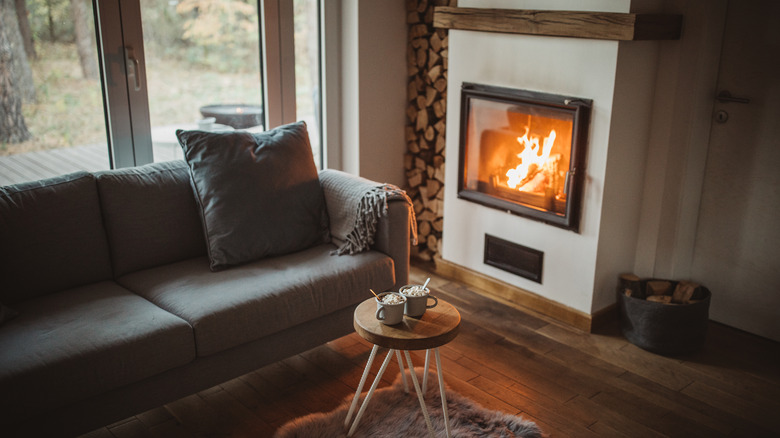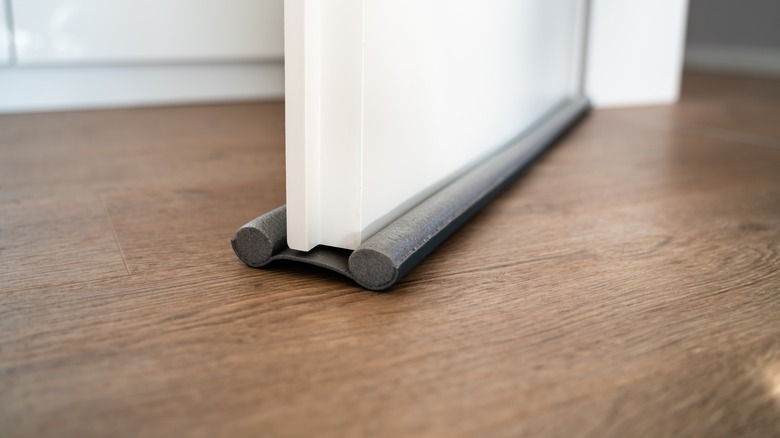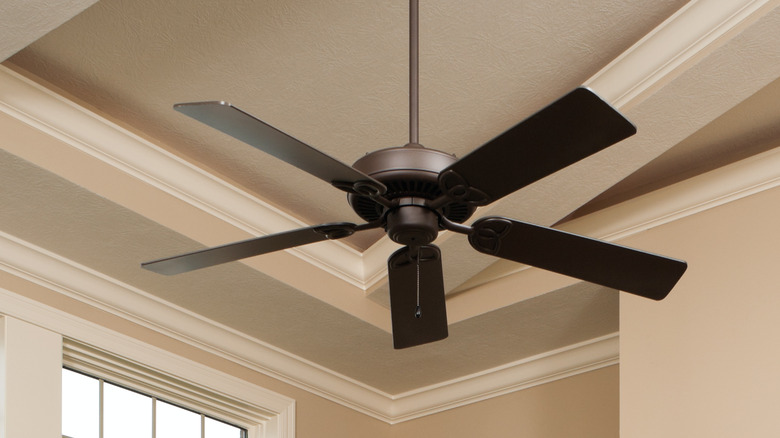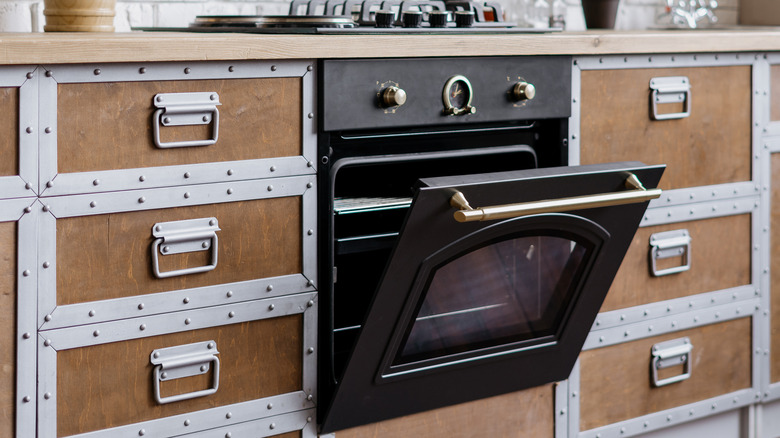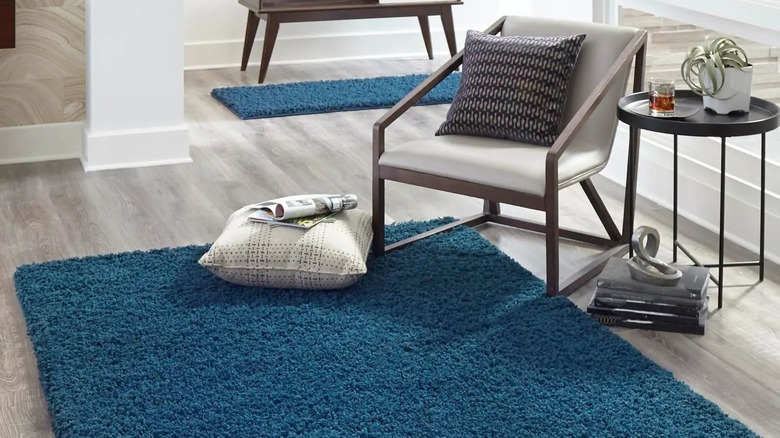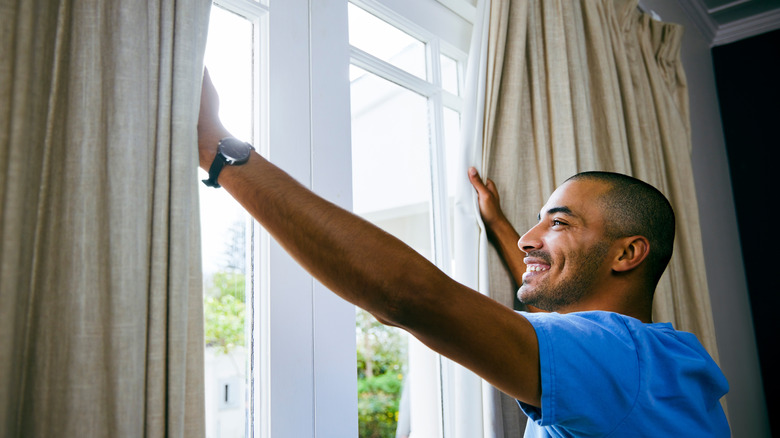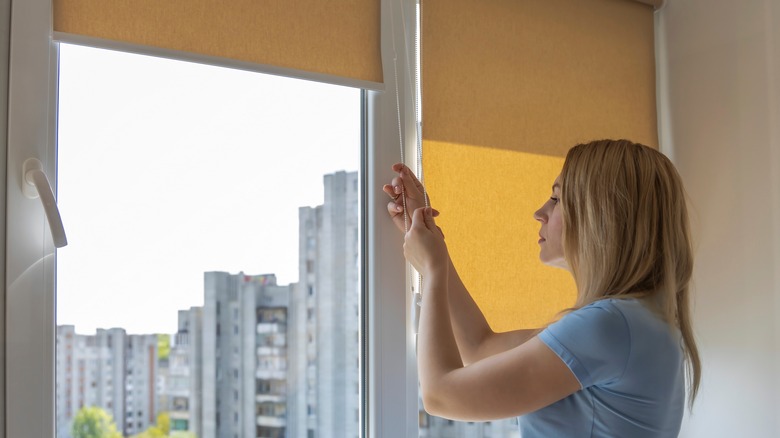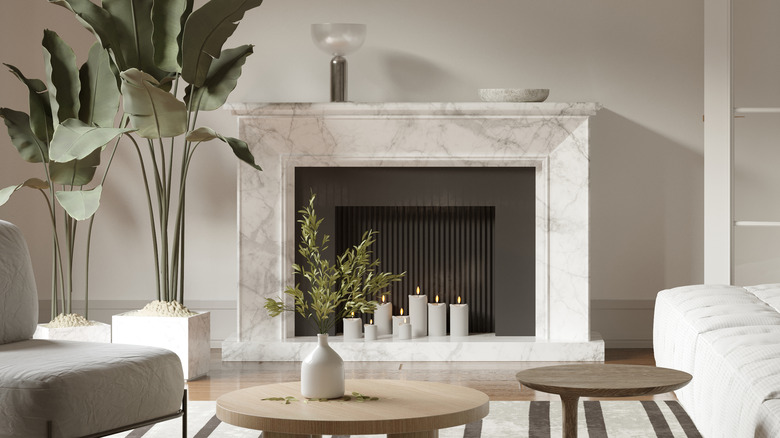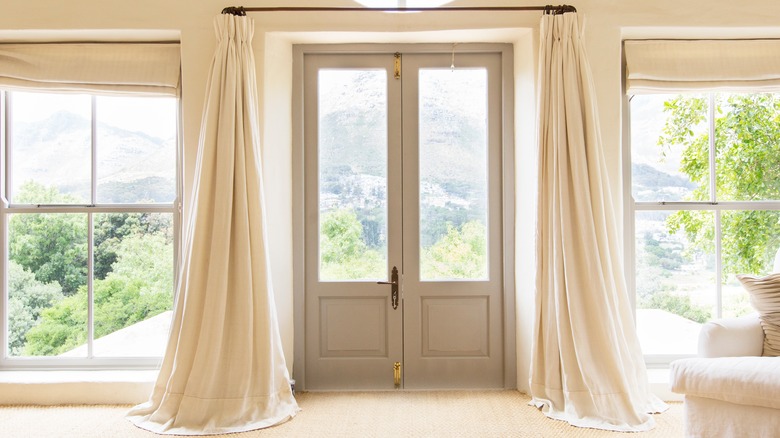The 10 Best Hacks For A Warmer House This Winter
We may receive a commission on purchases made from links.
The winter season can turn your cozy home into a cold one. Frigid air from outside can find its way through cracks and crevices, sending you running under the blanket. Fortunately, there are plenty of easy hacks to fortify your home against the freezing temperatures. Some tricks double as interior design pieces, while others are temporary renovations that you can simply remove when the spring season begins. Best of all, you don't have to toggle with the thermostat.
The Center for Climate and Energy Solutions reports households in cold areas spend 35% to 50% of their energy bill on heating, proving that this is a major part of a home's expenses. Finding ways to weatherize your home, reduce heat loss, and prevent drafts is crucial for keeping your space comfortable throughout the winter, and the following hacks will do just that. Plus, they are budget-friendly and easy to do. In the long run, trying out one (or multiple) of these tricks will save you time, money, and energy.
1. Add a window film
Adding a window film will make your home more energy-efficient, as it will prevent cold air from coming in and warm air from leaking out. Applied correctly, the film shouldn't obstruct your view at all either. For instance, you could purchase the Duck Window Insulation Kit on Amazon for under $15. You won't be able to open the window without removing the plastic, but it's best to keep them closed in the winter anyway.
2. Block drafty winds
The gap underneath your door is the perfect place for cold air to sneak around your space. Perhaps you typically only use one part of your home while other rooms, like guest spaces, are left empty. Dressing those doors with draft stoppers will halt the circulation of air and keep the warmth in your most-used areas. There are also stoppers available that are meant to be placed on the inside seam of your exterior door to keep cold air from getting in. You can purchase either type online or at your local hardware store. However, if you're feeling crafty, why not DIY one with pool noodles?
3. Reverse your ceiling fan
Your ceiling fan is not just there to provide a cool breeze in the summer. During the colder months, it helps circulate warm air when operated in reverse. If possible, making the appliance turn in a clockwise rotation on the low setting will send the warm air that naturally travels up back down and toward the center of the room. Therefore, you could try turning on the fan before raising the thermostat.
4. Leave the oven door open
After roasting veggies or baking brownies, leave the oven door open. Once the oven is off, it is safe to let the 375 degrees Fahrenheit temperature cascade into the room and cozy up the kitchen. This hack is best if you're lounging around the island or washing dishes while the dessert cools, as it will only warm the kitchen. However, remember to never leave a hot appliance unattended, and don't simply start the oven just to heat your home, as these scenarios could create a fire risk.
5. Decorate with rugs
Rugs add to the warmth in your home, both literally by trapping in heat and aesthetically by making it look and feel cozier. The decor provides a layer over tiles, hardwood, concrete, and other non-carpeted flooring that traps warm air. It's way more comfortable walking on a mat than cold tile. Thick, high-pile rugs made from wool are the best for a comfy floor, much like a chunky wool sweater is a must-have in the winter. Plus, dark-colored pieces trap heat better than light shades, so opt for darker tones whenever possible.
6. Let there be light
While you don't want to actually open the window, it's typically a good idea to part the curtains, at least on sunny days. Sunlight is a natural and energy-efficient way to heat your home. Sit by the window in the sunshine and let the winter sun toast you — especially during peak hours of the morning and early afternoon. However, once the sun sets, you don't want to keep those curtains open.
7. Close the curtains and blinds
You won't benefit from open curtains on windows that don't receive direct sunlight or when the sun has set. Keep the coverings and blinds closed during the night and all day wherever the sun doesn't shine. When pulled closed, thick drapes can reduce heat loss by up to 10%, according to the U.S. Department of Energy. Fastening the fabric to the windowsill or wall and hanging it as closely to the window as possible increases its ability to prevent heat from escaping.
8. Plug your fireplace
Snuggling by the fire is one way to get warm during the winter, but when the logs turn to ash or if you simply don't use your fireplace often, consider plugging your fireplace. The open chimney is a channel for hot air to exit and cold air to enter. Keep the flue closed when it's not in use, and add a chimney balloon, which you could buy on Amazon, to stop drafts. You can also seal the fireplace opening into your home with a plastic film for an extra layer of protection.
9. Try a door curtain
Just like heavy drapes block window drafts, they can do the same for your doors. Thermal curtains provide insulation, reduce noise, and increase privacy. Hang the fabric on the inside of your front, side, and back doors. Choose fabrics that are large enough to cover the door framing and pool on the floor so they block the crevices that air normally passes through. This is an inexpensive hack that will keep your home warmer while also adding a stylish element to your space.
10. Hang tapestries
Tapestries are basically rugs for your walls, so a large piece (or multiple smaller ones) made from a thick material can act as insulation, much like carpeting. If woven decor isn't your style, opt for grand canvas art or line the wall with bookcases. All of these materials can act as a layer to block out the cold air that radiates through the walls. Plus, the impromptu insulation doubles as cozy winter decor.
